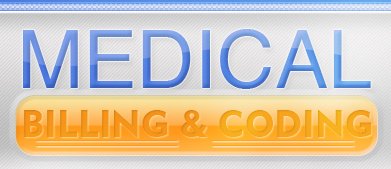RHIT Exam In order to become a Registered Health Information Technician (RHIT) you must sit for the RHIT exam.
In order to become a Registered Health Information Technician (RHIT) you must sit for the RHIT exam.
Prior to sitting for the RHIT exam individuals are required to complete the academic requirements,at an associate's degree level, of a Health Information Management (HIM) program accredited by the Commission of Accreditation for Health Informatics and Information Management Education (CAHIM). These courses are generally two years in length and are readily available in many colleges, universities, and online. Institues offering this curriculum can validate weather or not they are an accredited CAHIM course. Once all accidemic requirments are met individuals will receive an associated degree from the institute they have obtained their education from and may apply to sit for the RHIT exam through the American Health Information Management Association (AHIMA). AHIMA does not require membership in order to sit for the RHIT exam, however, members benefit from a $60.00 discount on the examination fee. Fees must be submitted to AHIMA along with an examination application. Upon application acceptance individuals will receive an Authorization To Test (ATT) letter from AHIMA. The ATT letter should be read completely for testing instructions, policies, and procedures. This letter also includes a period of time individuals are authorized to schedule their RHIT exam. If an individuas does not schedule their exam during their authorized time period and allows it to lapse they will forfit their exam application fee and will be required to re-apply in order to gain a seconf authorization.
Exam Details
Health Data ManagementThirty percent of the RHIT exam is tested on health data management knowledge which includes:
Health data structure, content, and standards: This portion of the RHIT exam will focus on an individual's ability to collect and maintain data sets, correctly apply and/or interpret medical terminology, the ability to comply with national patient safety goals in regards to abbreviations, analyze information in medical records and ensure it supports code selection, and prove proficient, accurate, and knowledgeable when applying or analyzing data and data sources. Healthcare Information Requirement and Standards: These questions focus on testing an individual's knowledge of medical record standards, accuracy and completeness, an examinee's ability to analyze medical records for compliance issues using both qualitative and quantitative analysis, and the ability of apply organizational policies and procedures. Clinical Classification Systems: Tese RHIT exam questions test individuals on their abilities to utilize monitor and work processes to support coding and clinical classifications, coding capabilities including a thoro knowledge and adherence to organizational regulations regarding code assignment, the ability to ensure accurate coding groupings, and the ability to accurately read and interpret medical records into medical codes and identify discrepancies. Reimbursement Methodologies: This prtion of the exam tests an individual's ability to apply policies and procedures for the use of clinical data that is required in a PPS and compliance with established guidelines in the reimbursement cycle.
Health Statistics, Biomedical Research, and Quality Management Thirteen percent of the RHIT examination is tested over health statistics, biomedical research, and quality management.
Thirteen percent of the RHIT examination is tested over health statistics, biomedical research, and quality management.
This portion of the RHIT exam subdivides and mainly focuses on :
Healthcare statistics and research: These RHIT exam questions focus on testing an individual's ability to pull and maintain data for clinical databases, registries, ect. Individual's will also be tested on data collection, organization, and presentation for: administrative purposes, financial purposes, performance improvement programs, and quality management purposes. Quality assessment and performance improvement This portion of the exam analyzes how an examinee participates in facility wide quality assessment programs and their ability to present data in both verbal and written forms.
Health Services Organization and DeliveryQuestions regarding this subject hold seventeen percent of the exam grade.Questions in this portion of the RHIT exam generally fall under the following catagories:
Healthcare delivery systems: These questions test examinees on their ability to comply with certification, licensure, and accreditation standards on local, state, and national levels. Individuals will also need to prove their ability to apply policies and procedure in order to comply with changing regulations from various payment systems. The ability to both understand and differentiate between various providers and disciplines and respond to their information needs will also be tested here. Healthcare Compliance, confidentiality, ethical, legal, and privacy: This portion of the RHIT exam is used to test individuals on their abilities to implement legal and regulatory healthcare requirements, apply policies and procedures for access and disclosure of protected health information, and their ability to maintain user and access logs in order to track those who have accessed patient identifiable data. Individuals will also be tested on their ability to identify and report privacy issues, ability to demonstrate and promote legal and ethical standards, as well as compliance reporting capabilities. A knowledge of and the ability to implement health record documentation guidelines, educate staff, and prepare the organization for accreditation, licensing, or certification is also tested here.
Information Technology and Systems Information technology and systems questions appear in twenty five percent of the RHIT exam questions.
Information technology and systems questions appear in twenty five percent of the RHIT exam questions.
These questions are divided into one of the following four categories:
Information and communication technologies: These questions are used to test individuals in their abilities to use hardware, software, and ensure data collection, storage, analysis, retrieval, and reporting. Knowledge of both common and specialized software is also tested as well as one's ability to apply policies and procedures for network use, including electronic medical record platforms. Individuals will also be tested on their use of software and hardware in regards to protecting and ensuring data is complete, accurate, consistent, and up-to date. Data, storage, and retrieval: This portion of the RHIT exam requires examinees to have a knowledge of electronic or imaging technology for data and record storage, how to accurately maintain patient numbering and filing systems, and how to design forms, input screens, and other record documentation tools. The ability to query, design, and generate reports using computer software is also tested with these questions. Examinees are also expected to prove they can maintain the integrity of all master indexes as well as use and maintain archival and retrieval systems for patient information. Data security: These type of RHIT exam questions test an examinee's knowledge regarding confidentiality and security measures surrounding PHI, the ability to implement security policies for departmental and organizational data and information systems, and the ability to use data compiled from an audit trail. Health information systems: Questions under this catagory are used to analyze an individual's ability to collect and report data on incomplete records, timeliness of record completion, and abilities to maintain filing and retrieval systems for health records.
Organizational ResourcesThe remaining thirteen percent of the RHIT exam questions fall under the organization resources grouping.Questions under this heading are divided into two catagories:
Human resources: Questions on this portion of the RHIT exam test the examinees ability to apply leadership fundamentals and developing and/or contributing to: job descriptions, performance appraisals, interdepartmental committees, orientation programs, and strategic planning. Examinees are also tested on their abilities to train, educate, and consult with others regarding the use of health information. A knowledge of quality and productive standards, how to analyze staff performance and resources, prioritize job functions, and compliance with labor regulations on all levels is also tested here. Financial and physical resource: These questions are used to alalyze an individual's ability to: delegate and distibute workloads and resources effectively, understand and oversee coding and revenue cycles, and the ability to make budget recommendations.
Grading Scale The RHIT exam is graded using "scaled scoring". This involves a mathematical formula that converts the number of questions answered correctly into a number between 100 - 300.
The RHIT exam is graded using "scaled scoring". This involves a mathematical formula that converts the number of questions answered correctly into a number between 100 - 300.
In order to pass the RHIT examination an examinee must obtain a minimum of 300 points.
In most cases grades will be printed out immediately after completing the RHIT exam. However, if results are not available they will be mailed to the individuals listed address within a few
weeks.
|
RHIT EducationIndividuals seeking to become an RHIT are first required to complete a two year program and obtain an associates degree. All HIM programs must be accredited by the Commission on Accreditation for Health Informatics and Information Management Education (CAHIIM) and individuals must meet all of the acidemic requirements. Certification is awarded to those who have met the above requirements and who have sat for and passed the PHIT exam. RHIT vs RHIAStarting out with an RHIT first allows individuals to later transition to an RHIA without needing to make a four year comitment right away.Becoming an RHIT allows individuals to:
Dual CredentialsSome individuals holding an RHIT credential also choose to gain a medical coding certification.Holding dual credentials has many benefits.
|
|
|
RSS information 
Enjoy This Site?
Then why not use the button below and add us to your favorite bookmarking service? |
||
|
| ||

